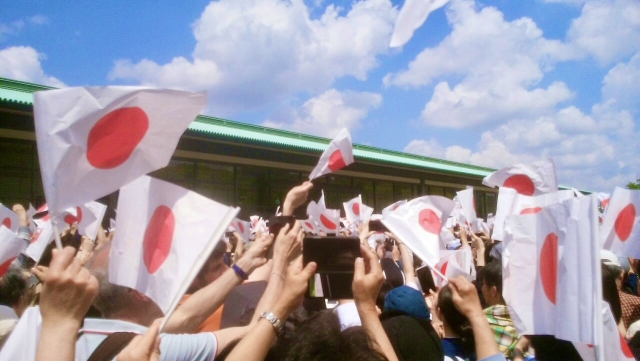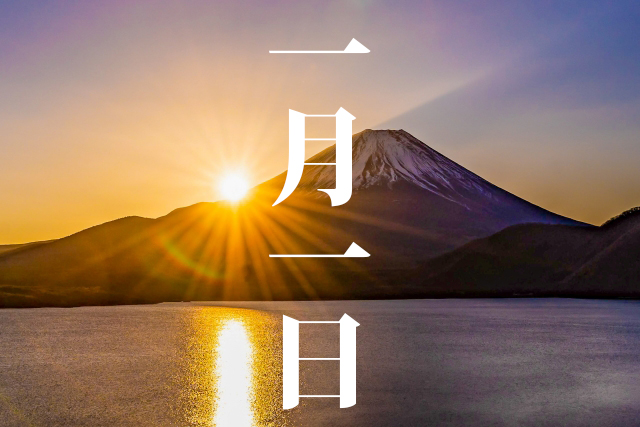Ichigatsu ichijitsu
Toshi no hajime no tameshi tote
Owari naki yo no medetasa wo
Matsu take tatete kadogoto ni
Iwou kyou koso tanoshikereHatsuhi no hikari sashi idete
Yomo ni kagayaku kesa no sora
Kimiga mikage ni taguetsutsu
Aogi miru koso tootokereLyricist:SENGE Takatomi
Composer:UE Sanemichi
in 1893
January First
As is customary at the beginning of the year,
Symbolizing the everlasting joy of the world,
Adorning each home with Kadomatsu,
And joyfully celebrating New Year’s together.
The first rays of the sunrise,
Brightening the New Year’s sky all around,
Resembling the Emperor’s dignified image,
It’s a precious act to gaze upon.

When the New Year arrives, this song is widely used in various television programs and is cherished by the Japanese people. However, it seems that many relate more to the bright melody, projecting hope for the new year, rather than delving into the meaning of the lyrics.

The first verse conveys the joy of celebrating the New Year in households, while the second verse juxtaposes the grandeur of the Emperor with the first sunrise. It evokes a nuance reminiscent of Japan’s national anthem, “Kimigayo”. This connection is quite apparent as both this song and “Kimigayo” were established in August 1893, with this song being presented as a Ministry of Education’s school song and “Kimigayo” being designated as a ceremonial music, suggesting a sibling-like relationship between them.

The lyricist, SENGE_Takatomi, held positions from Izumo-no-kuni-no-miyatsuko (an official responsible for the religious rituals and governance of Izumo Grand Shrine) to becoming a member of the Upper House, a member of the House of Peers, and the Governor of Tokyo Prefecture. He engaged in politics while being rooted in Shintoist ideology. Considering this, the content of the lyrics aligns well with his background. However, due to its highly dignified classical language, it appears that younger generations might lean towards appreciating the melody rather than the meaning. Moreover, the rhythm, possibly influenced by the classical language, might also have an impact.

Flow in edgewise – 撮影, CC 表示 3.0, リンクによる
Incidentally, I myself thought it was “Ichigatsu tsuitachi,” but the official name of the song is “Ichigatsu ichijitsu.






コメント